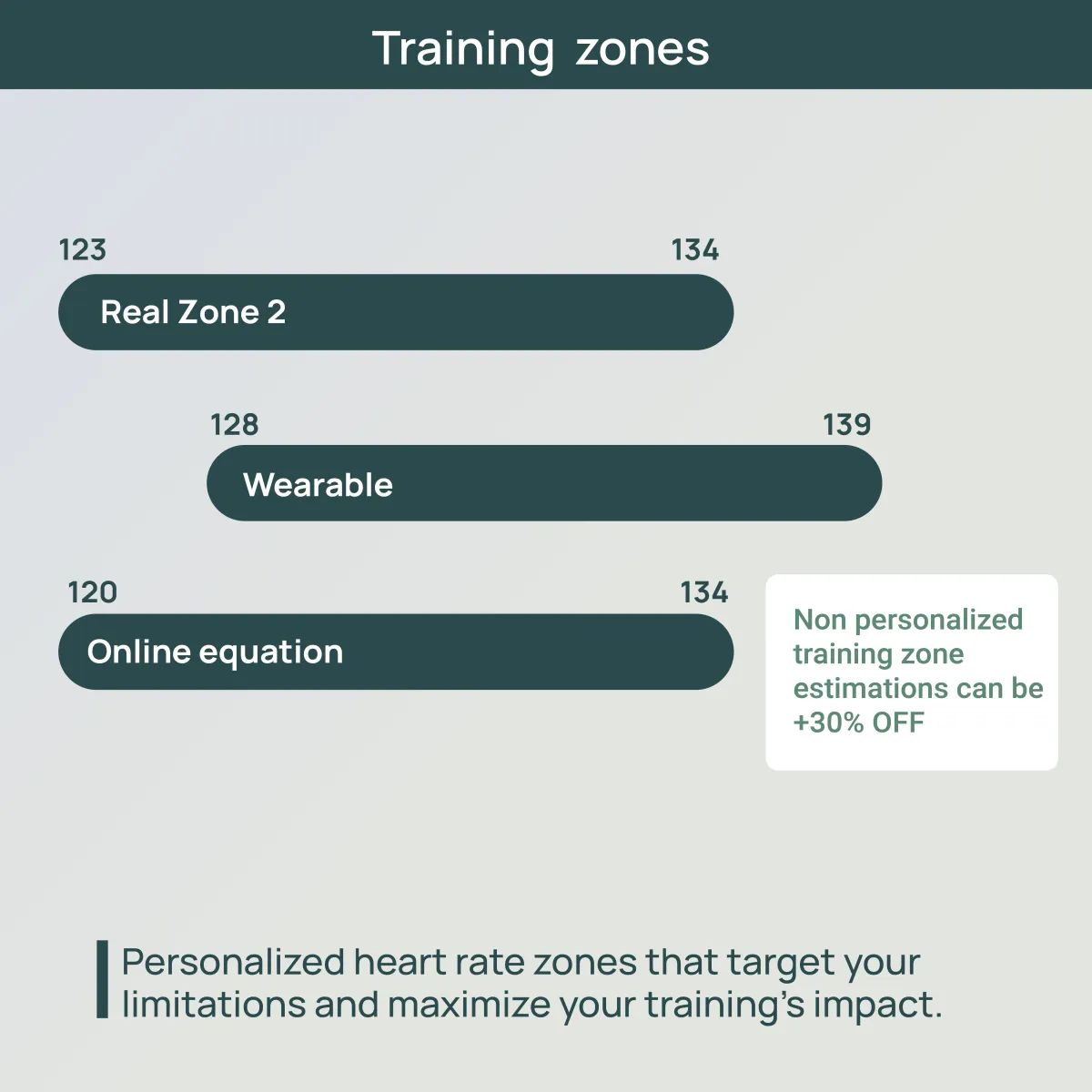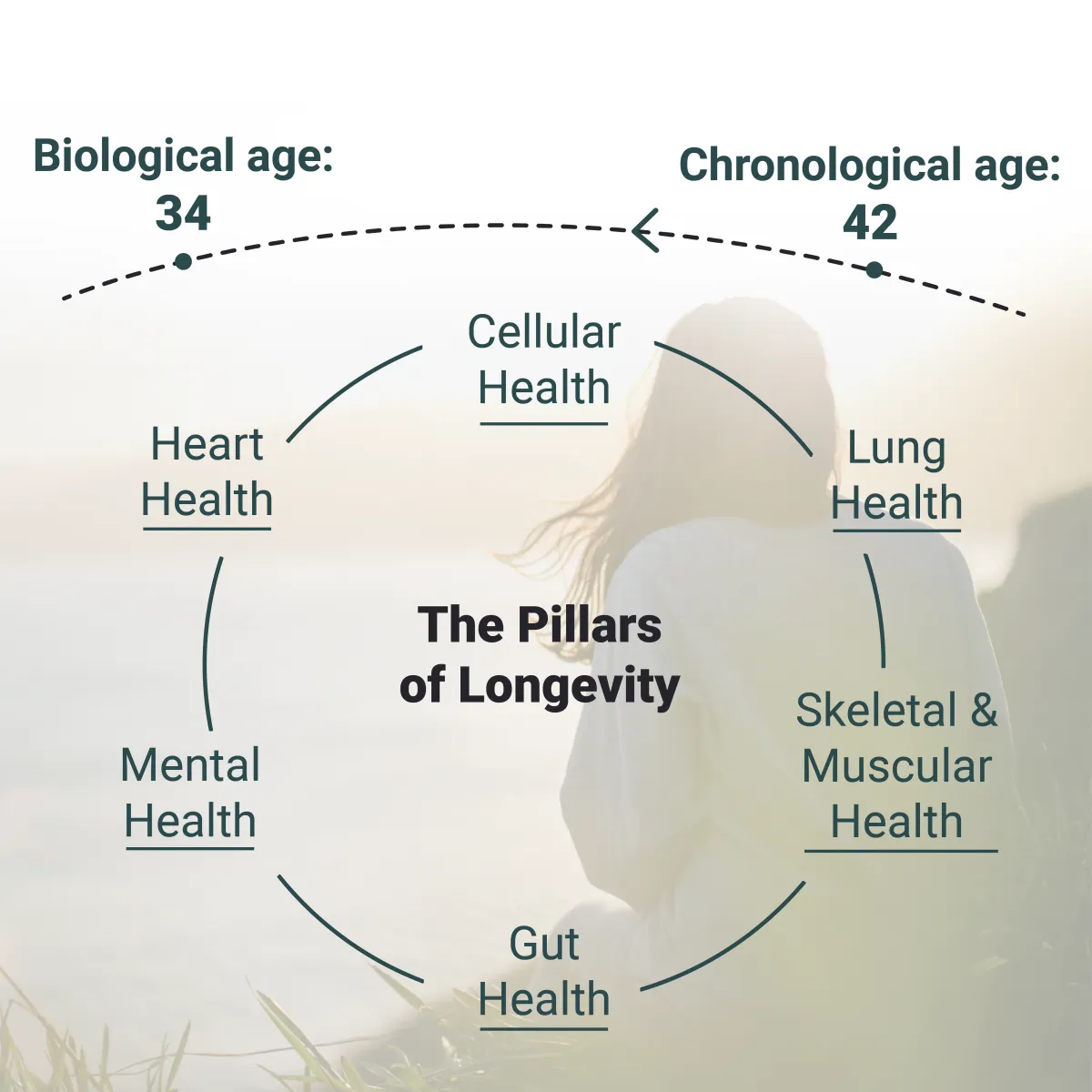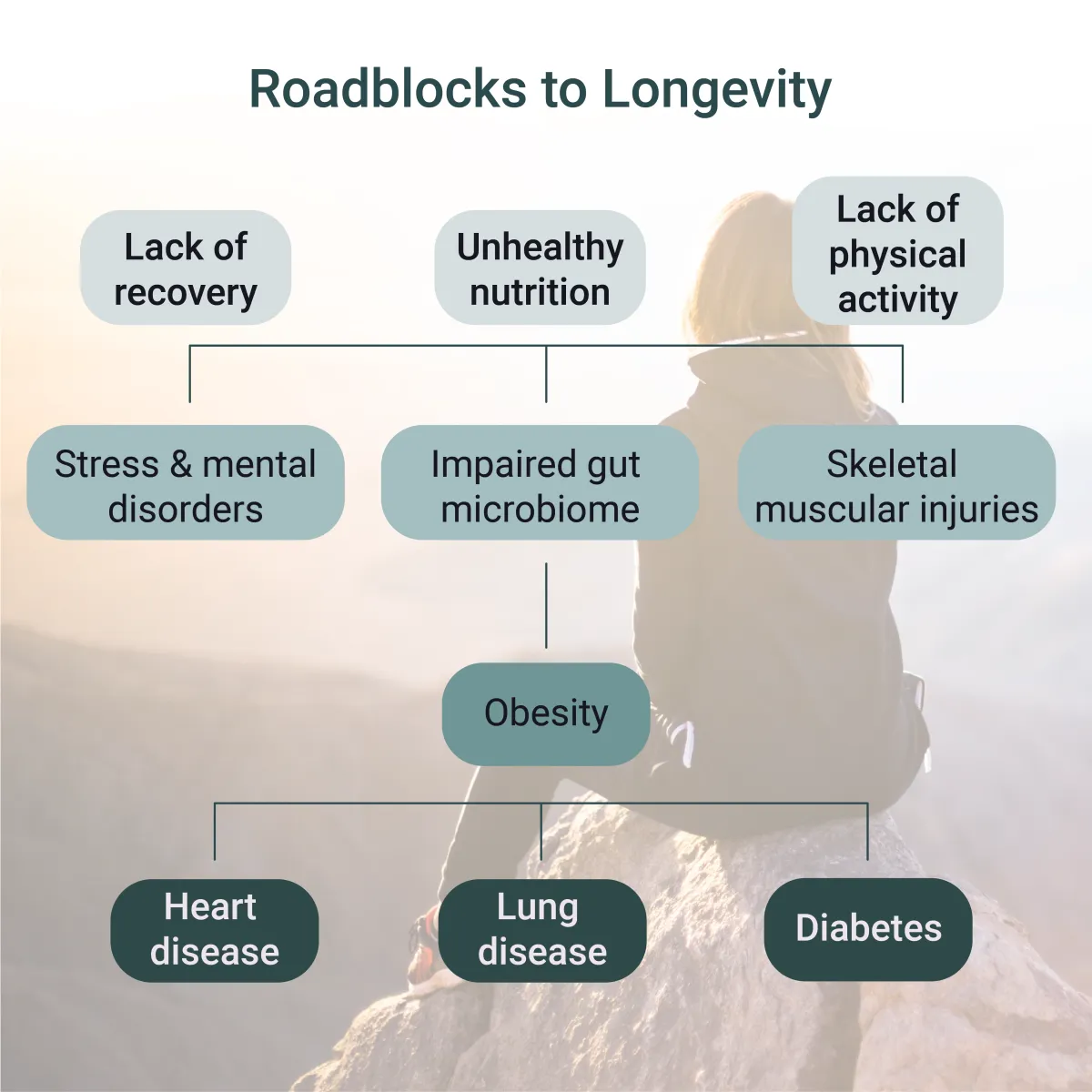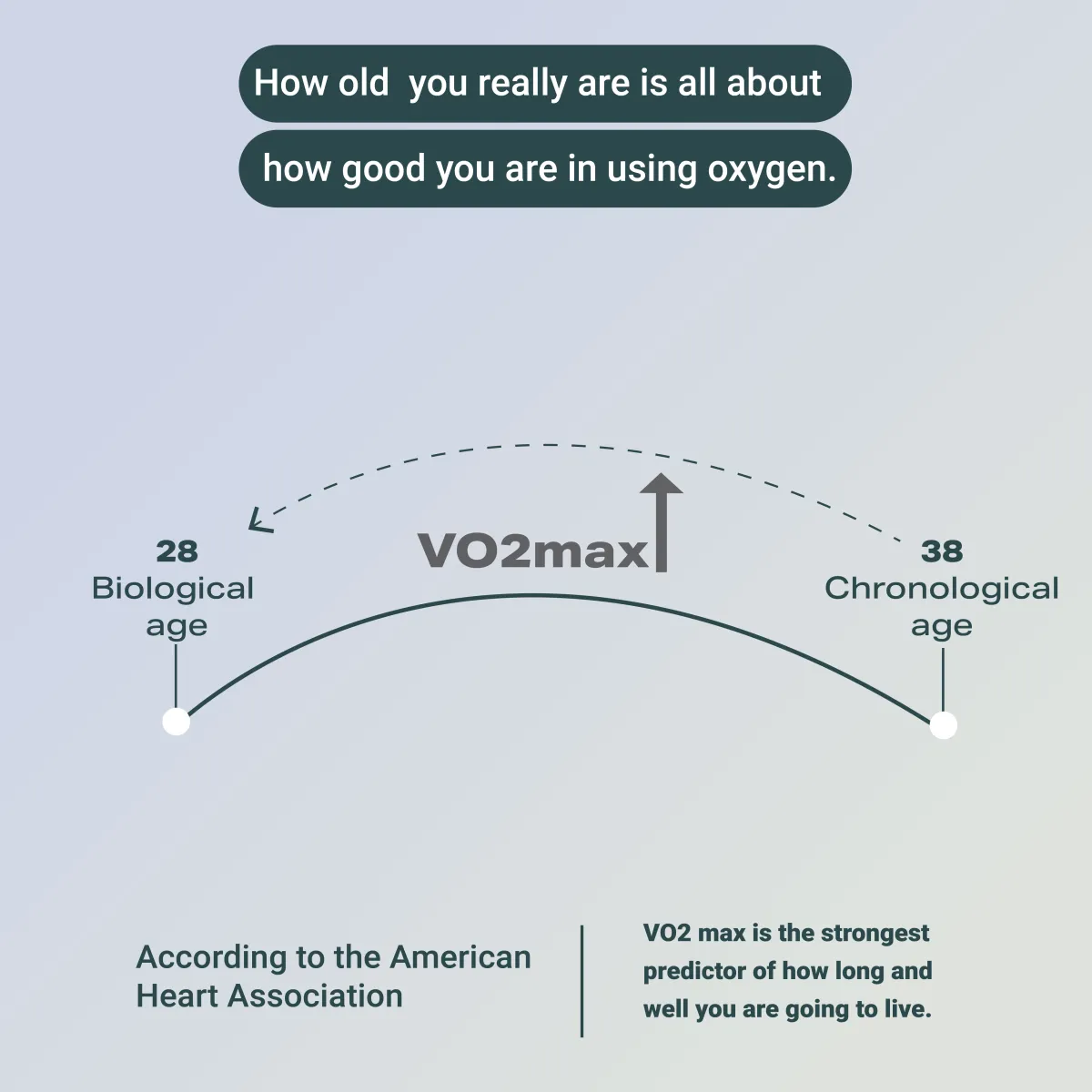METABOLIC TESTING
Find out the right nutrition balance.
Find out your appropriate training zones.
Find out your biological age and longevity insights.
Assess don't guess.
Frequently Asked Questions
How can PNOĒ help me live longer and better?
Oxygen is the molecule of life. The more oxygen you can absorb, the healthier you are. It may make sense intuitively, but there is a simple explanation. For oxygen to enter and be utilized by your body, there are several physiological processes that need to work together. Your lungs need to inhale it, the heart needs to pump it, your bloodstream needs to transport it, and then your cells need to absorb it as well. As a result, high oxygen consumption means that all these physiological processes are in sync.
These systems are also linked to clinical conditions that can potentially reduce your quality and duration of life. Specifically, a body whose cells don't absorb oxygen as expected may be prone to developing diabetes, a heart that doesn’t pump oxygen well is a candidate for cardiovascular disease, and lungs that don’t absorb oxygen effectively can indicate respiratory diseases such as COPD or asthma.
PNOĒ analyzes with gold-standard precision how effectively oxygen flows through your heart, lungs, and cells and identifies which system or systems may be posing an issue for your health.
The analysis also determines with clinical accuracy: How many calories your body burns so that we can prescribe the calories that will maintain a healthy weight without causing hunger and low energy levels.
How many fats and carbs you burn so that we can prescribe the optimal breakdown among fats, carbs, and protein to maximize cellular health.
The food sources that will fortify important areas of your health such as your heart, lung, and cellular health. The right meal timing to minimize hunger and maintain your energy levels.
The right exercise program to prevent your metabolism from declining with age.
Such is the power of oxygen consumption or VO2 max as a gauge of overall health that in 2016 it was declared by the American Heart Association the gold standard indicator of your biological age. The American Heart Association declared VO2max (maximal oxygen consumption) as a gauge for overall health in 2016 and the gold standard indicator of biological age.
How can PNOĒ help me improve my performance for endurance sports?
Oxygen is the molecule of performance as it is the most fundamental element your body requires to convert nutrients such as carbs and fats into the energy it needs to move and perform. For oxygen to be absorbed and consumed, several key processes need to work together, your heart, lungs, blood circulation, and cells. As a result, effective oxygen flow through these systems indicates high athletic ability. Conversely, the system that limits oxygen flow through this chain is the one that is blocking your ability to perform better. PNOĒ analyzes with gold-standard precision how effectively oxygen flows through your heart, lungs, and cells and identifies which system or systems are posing an obstacle in your athletic development. The analysis also determines with clinical precision:How many calories your body burns so that we can prescribe the calories that will ensure high metabolism, improved recovery ability, and optimal weight. How many fats and carbs do you burn so that we can prescribe the optimal breakdown among fats, carbs, and protein during, before, and after training. The food sources that will fortify important areas of your health such as your heart, lung, and cellular function may be facing problems. The right meal timing to maximize performance. Your personalized training zones to maximize the impact of your endurance and interval training. The optimal breakdown among resistance, interval, and endurance training that’s optimized for your athletic goal and targets the limitations blocking oxygen flow throughout your body.
Do I have to be a client of Vinna to schedule a test?
No, we want to be able to help people no matter where they workout. This will help you or your coach stop guessing at what you need or where your limitations may be.
What are the pre-test requirements?
Fast except from plain water for at least 3 hours prior to testing (RMR test only)
No caffeine, tobacco or stimulating drinks for at least 3 hours prior to testing
Avoid intense exercise or any exercise of more than 1 hour 24h prior to testing
The resting test can be conducted any time of the day, however the retest should be
conducted the same time of the day as the initial assessment
Continue medications as usual
Arrive at least 10 min prior to the test so you can be relaxed before the test





